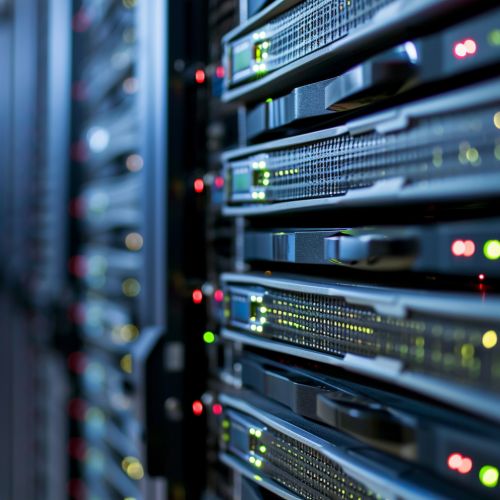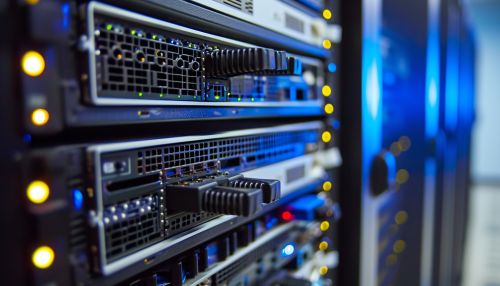Server (computing)
Overview
A server in computing is a piece of hardware or software that provides functionality for other programs or devices, known as "clients". This architecture is called the client-server model, where servers and clients communicate over a computer network on separate hardware, but both can reside in the same system. A server host runs one or more server programs, which share their resources with clients. A client does not share any of its resources, but it requests the server's content or service function. Clients, therefore, initiate communication sessions with servers, which await incoming requests.
History
The concept of servers has been in existence since the early days of computing. The term "server" was first used with the advent of mainframe computers in the 1960s. These large, high-performance machines were designed to manage and control the computing resources of large organizations. They were used to run applications, store data, and serve that data to terminals and users across a network.
Types of Servers
There are numerous types of servers, each designed to perform specific tasks. Some of the most common types include:
Web Server
A web server is a server that hosts websites and makes them available to users over the internet. It uses the Hypertext Transfer Protocol (HTTP) to serve files that form web pages to users in response to their HTTP requests.
File Server
A file server is a server that provides a location for shared disk access, i.e., it allows multiple clients to share files and storage space.
Database Server
A database server is a server that uses a database management system (DBMS) to provide database services to other computer programs or computers.
Game Server
A game server is a server that provides a platform for multiplayer video games. It can be used to connect players in the same game or to host games.
Mail Server
A mail server is an application that receives incoming e-mail from local users and remote senders, forwards outgoing e-mail for delivery, and stores messages.
Server Hardware
Server hardware is specialized equipment designed to run server operating systems and software. This hardware is built to be robust, reliable, and capable of managing large amounts of data and high traffic loads. Server hardware often includes features not found in consumer-grade computers, such as error-correcting memory, redundant power supplies, and hot-swappable components.
Server Software
Server software, also known as a server operating system, is software designed to run on servers and provide services to clients. Examples of server software include Microsoft Windows Server, Linux, and Unix.
Server Roles and Services
Servers can perform a variety of roles and provide a wide range of services, depending on their configuration and the software they run. Some of these roles and services include:
Domain Controller
A domain controller is a server that responds to security authentication requests within a Windows Server domain.
DNS Server
A DNS server is a server that translates domain names into IP addresses, allowing users to access websites using human-readable URLs rather than numerical IP addresses.
DHCP Server
A DHCP server is a server that automatically assigns IP addresses to devices on a network.
Print Server
A print server is a server that manages one or more printers, and a network server is a server that manages network traffic.
Server Security
Server security is a critical aspect of server management. It involves protecting the server from threats such as unauthorized access, data theft, and denial of service attacks. Server security measures include the use of firewalls, intrusion detection systems, and regular software updates.
See Also


